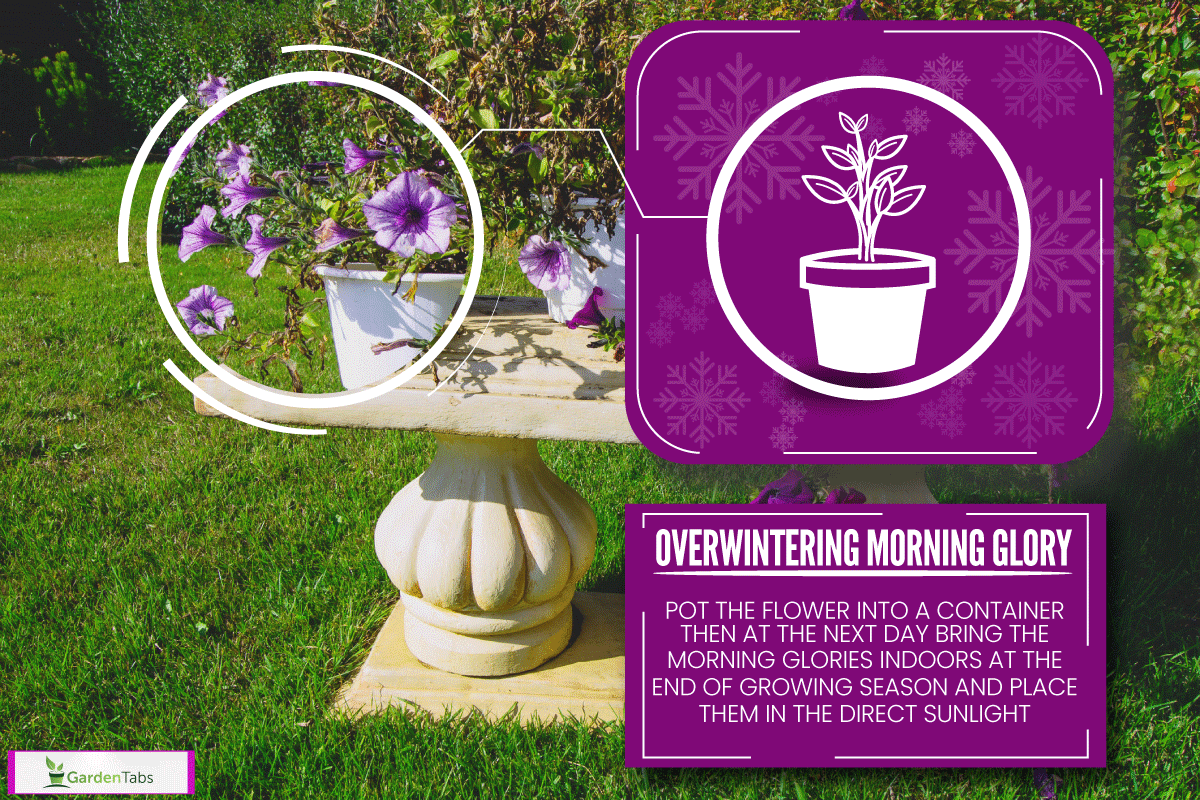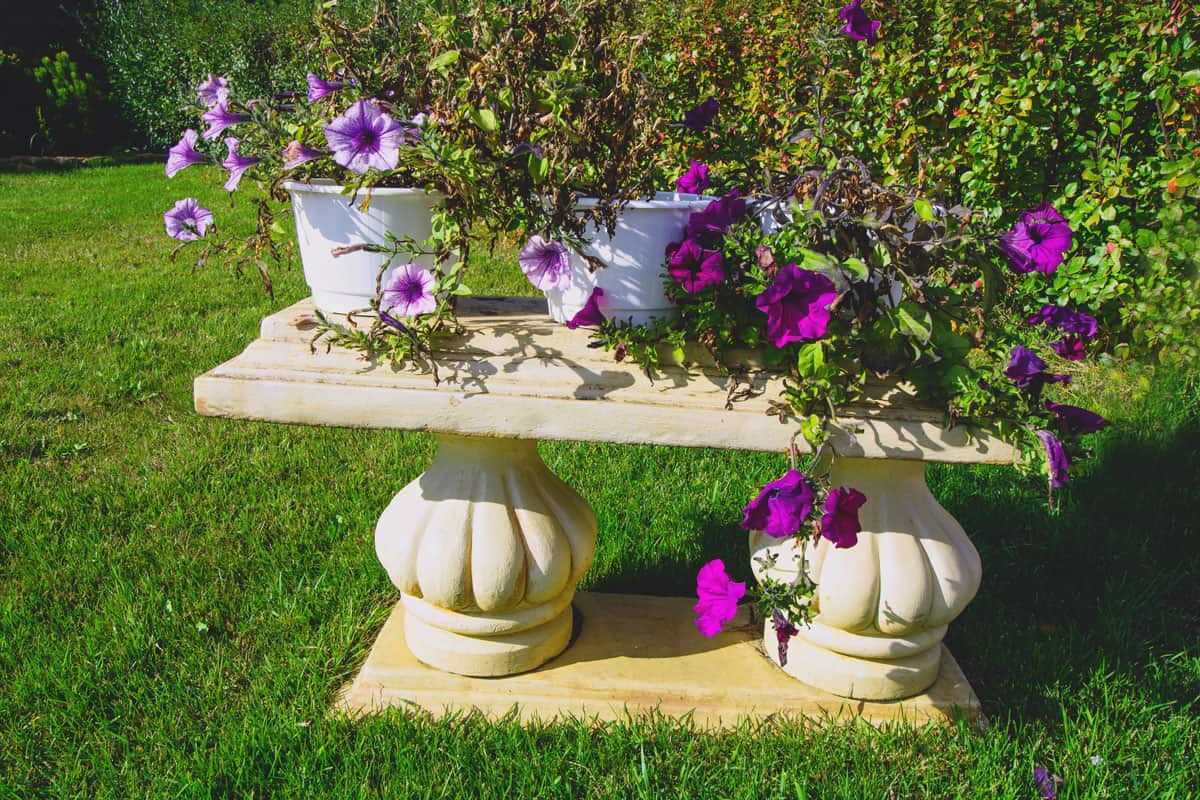Morning Glory is a common term for several flowers, shrubs, and vines. Often these lovely varieties are scattered throughout gardens and growing in wild habitats.
Suppose you have Morning Glories planted in your yard and wonder how to overwinter these flowers. We've researched this question and have found substantial research results.
Overwintering Morning Glories is comparable to overwintering other species of flowering plants. Pot the flowers into a container.
Next, bring the Morning Glories indoors at the end of the growing season, right before the first frost, and place them in the direct sunlight.
Are you ready to learn more about Morning Glory flowers? Or what are the differences between Bindweed and Morning Glories?
We've researched these topics and have gathered quality research results to share with you!

How To Overwinter Morning Glories
Knowing which variety of Morning Glory flowers you have planted is essential because hundreds of flowers are included within the sub-category "Morning Glory."
A simple way to find out which flowers, shrubs, or vines you have is to use Google Lens or another plant identification app.

Or you could ask your local greenhouse or floral shop to identify your plant species.
The term "overwintering" means bringing the plants indoors for the winter season to preserve the plants for the following growing season.
- Bring the potted Morning Glory flowers indoors.
- Place the Morning Glory plant in full/direct sunlight.
- Only water it when the top layer of the soil is dry.
- Do not overwater. Overwatering will increase the chances of the plant dying during the winter.
- Provide the plant with fertilizer. Use the recommended amount for potted plants versus outdoor garden measurement protocols.
- Frequently check the plants for pests.
- Return the plant to the outdoors once the next growing season has returned.
Plant fertilizers are great for encouraging flowers and veggie plants to grow. Click here to read What Kind Of Fertilizer Helps Flowers Bloom? [7 Concrete Suggestions]
How Do You Keep Morning Glory Alive During Winter?
Great question! The best option to keep the Morning Glories alive and flourishing over the winter months will depend on your location zone.
Suppose you live in a cold climate. Your best option would be to pot the flowers into containers and bring them indoors when the autumn season begins before the first frost.
If you live in a warmer climate, the Morning Glories will continue through the fall, looking vibrant with color. It is encouraged to deadhead the flower plants and prune the vines to produce growth and maintain optimal plant health.
It is best to cut those back in the fall for morning glory vines to protect the roots and encourage the vine to return in the springtime.
For the best results, use the link below to determine which zone you are located within and how those growing conditions pertain to your garden.
Click here to use the USDA Plant Hardiness Zone Map.
Will My Morning Glory Come Back After Winter?
Morning Glories are considered annual or perennial based on your location zone. Suppose you are in zone nine or ten; the Morning Glories will return the following year as hardy perennials.
Gardeners in colder zones will raise the Morning Glories as annuals. Unless they overwinter the flowers indoors, they will not return in the springtime.
Are you interested in vertical gardening and wondering how to start your own? Click here to read How Much Does It Cost To Make A Vertical Garden?

Are Morning Glories Annuals Or Perennials?
Excellent question! Whether the Morning Glory is annual or perennial is determined by which zone you planted the flowers.
For example, if you planted the Morning Glory seeds in the nine through eleven zones, the flowers will return the following growing season as perennial.
Suppose the seeds were planted in a colder climate in five through eight zones; the Morning Glories will grow as annuals.
See these flower seeds on Amazon here.
What's The Difference Between Morning Glory And Bindweed?
According to The Farmer's Almanac, the field Bindweed is a perennial that looks very similar to its cousin, the annual Morning Glory.
The field Bindweed is a beautiful invasive species found throughout Asia and Europe.
Often referred to as "perennial Morning Glory" or "Creeping Jenny." The Bindweed has an incredibly deep and intricate root system that makes removing it from the landscape challenging.
How To Tell Field Bindweeds And Annual Morning Glories Apart
- The field Bindweed flowers are only pink or white. Compared to the annual Morning Glories, which grow in an array of colors, from blue, magenta, purple, red, or white.
- Morning Glories have much thicker vines than the field Bindweed.
- Morning Glories have leaves that are heart-shaped and measure about two inches across. Bindweed leaves are smaller than two inches across and are arrow-shaped.

Should I Cut Back Morning Glory In The Fall?
According to Better Homes & Gardens, the optimal time to cut back on Morning Glories is in the fall after the first frost has caused the plants' foliage to dry up and die.
For the best results, cut the foliage about two inches above the ground with pruning shears. Use a measuring tape or yardstick to ensure you don't cut the foliage too short.
Suppose you are concerned that the roots do not have enough protection from weathering the coming cold months of winter.
Place an inch or two of mulch around the base of the Morning Glories to insolate the roots.
View these garden shears on Amazon.
How To Mulch Around Morning Glories
The Farmer's Almanac advised pulling weeds before mulching.
Without removing the weeds before adding the mulch, those weeds will grow through the mulch and consume nutrients from the soil that the flowers could absorb instead.
Word of caution: don't use more mulch than necessary or have it uneven with areas of more than four inches in any area because over-mulching will diminish the oxygen supply to the plant's roots.
Also, over-mulching will encourage fungi mats to flourish. Those fungi mats will repel the water you want to conserve for your flowers' root systems.
Safety Considerations When Growing Morning Glories
According to The National Capital Poison Center, the flowers are not poisonous to humans when accidentally consumed. Moreover, due to the chemical toxin lysergic alkaloids, the seeds are classified as toxic to cats, dogs, horses, and humans.
Consuming the Morning Glory seeds will cause several symptoms, including diarrhea, hallucinations, migraines, and vomiting, requiring medical attention.
Suppose your child has accidentally ingested the Morning Glory seeds.
Call 911 or Poison Control for further assistance. In the unfortunate event that your pet eats some of the seeds. Call your vet or animal poison control immediately!

Prevention Tips
- Store the Morning Glory seeds out of the reach of small children and pets.
- Don't leave children or pets unattended with hazardous plants.
- Keep the number for Poison Control in your phone's contacts in case of an emergency.
To Finish

We at Garden Tabs appreciate you taking the time to read our article, and we hope you have found it helpful!
We discussed how to overwinter, cut back, and mulch Morning Glory flowers to ensure they have the best conditions to survive the winter and make a bountiful comeback when the spring season returns!
Made it to the end? Check out these helpful related posts below!
Should You Cut The Flowers Off Laurel? [When And How To Deadhead]
Why Are Sunflowers Yellow? (And What Other Colors Can They Be)



